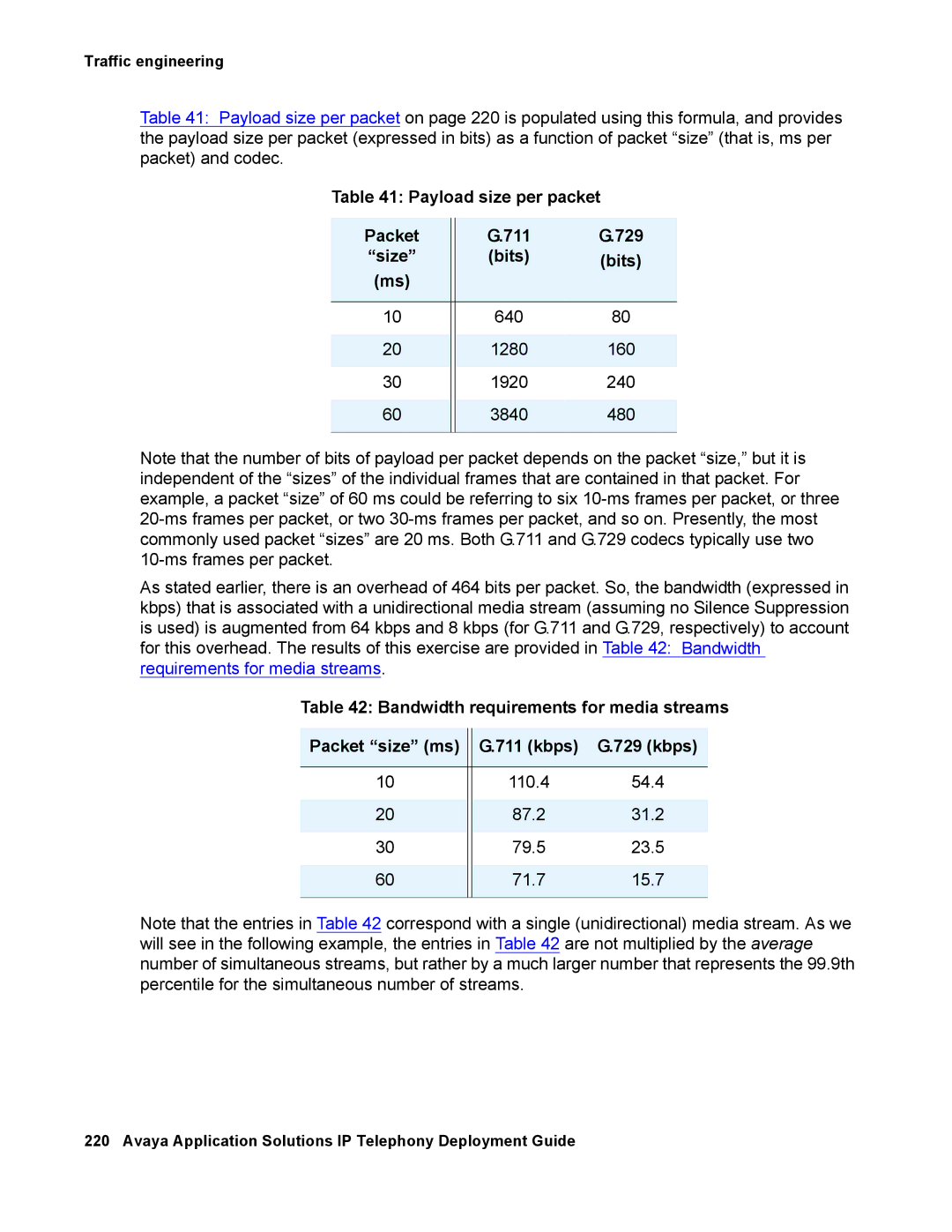
Traffic engineering
Table 41: Payload size per packet on page 220 is populated using this formula, and provides the payload size per packet (expressed in bits) as a function of packet “size” (that is, ms per packet) and codec.
Table 41: Payload size per packet
Packet |
| G.711 | G.729 |
“size” |
| (bits) | (bits) |
(ms) |
|
|
|
|
|
|
|
10 |
| 640 | 80 |
|
|
|
|
20 |
| 1280 | 160 |
|
|
|
|
30 |
| 1920 | 240 |
|
|
|
|
60 |
| 3840 | 480 |
|
|
|
|
Note that the number of bits of payload per packet depends on the packet “size,” but it is independent of the “sizes” of the individual frames that are contained in that packet. For example, a packet “size” of 60 ms could be referring to six
As stated earlier, there is an overhead of 464 bits per packet. So, the bandwidth (expressed in kbps) that is associated with a unidirectional media stream (assuming no Silence Suppression is used) is augmented from 64 kbps and 8 kbps (for G.711 and G.729, respectively) to account for this overhead. The results of this exercise are provided in Table 42: Bandwidth requirements for media streams.
Table 42: Bandwidth requirements for media streams
Packet “size” (ms) |
| G.711 (kbps) | G.729 (kbps) |
|
|
|
|
10 |
| 110.4 | 54.4 |
|
|
|
|
20 |
| 87.2 | 31.2 |
|
|
|
|
30 |
| 79.5 | 23.5 |
|
|
|
|
60 |
| 71.7 | 15.7 |
|
|
|
|
Note that the entries in Table 42 correspond with a single (unidirectional) media stream. As we will see in the following example, the entries in Table 42 are not multiplied by the average number of simultaneous streams, but rather by a much larger number that represents the 99.9th percentile for the simultaneous number of streams.
